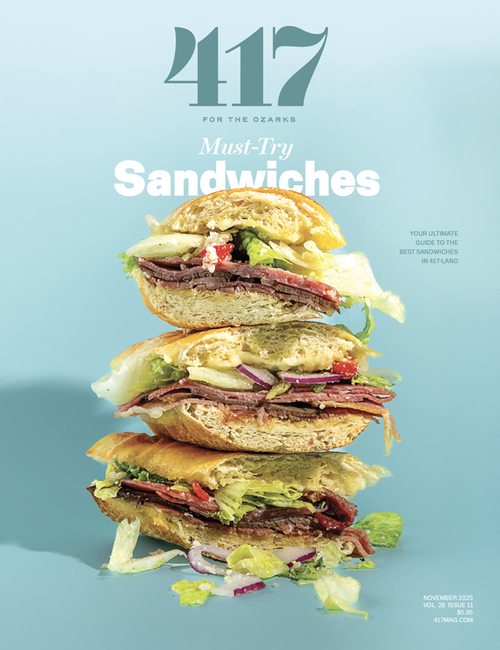Lifestyle
Welcome to Southwest Missouri
People in the Ozarks come in all shapes and sizes, and newcomers arrive daily. We sat down with 11 recent transplants including Dana Ford, Catherine Bass Black and C.J. Davis to hear what it's like to experience our corner of the world for the first time.
By Lillian Stone | Art Direction by Fried Design Co.
Apr 2019

Fred Rogers said it best: “There’s nobody else in the whole world who’s exactly like you.”
We feel the same way about 417-land. There’s no community in the world that’s quite like ours, and newcomers are arriving every day. This month, we sat down with 11 new southwest Missouri residents to hear about their arrival to our neighborhood. From a corporate recruiting powerhouse to a Congolese refugee, these newcomers allow us to see our home with fresh eyes—the good, the not-so-good and the tacky (three words: seasonally inappropriate shorts). In discovering their stories, we’re rewriting our own story. Like Mister Rogers said, it’s a beautiful day in the neighborhood.
Read a Newcomer's Story
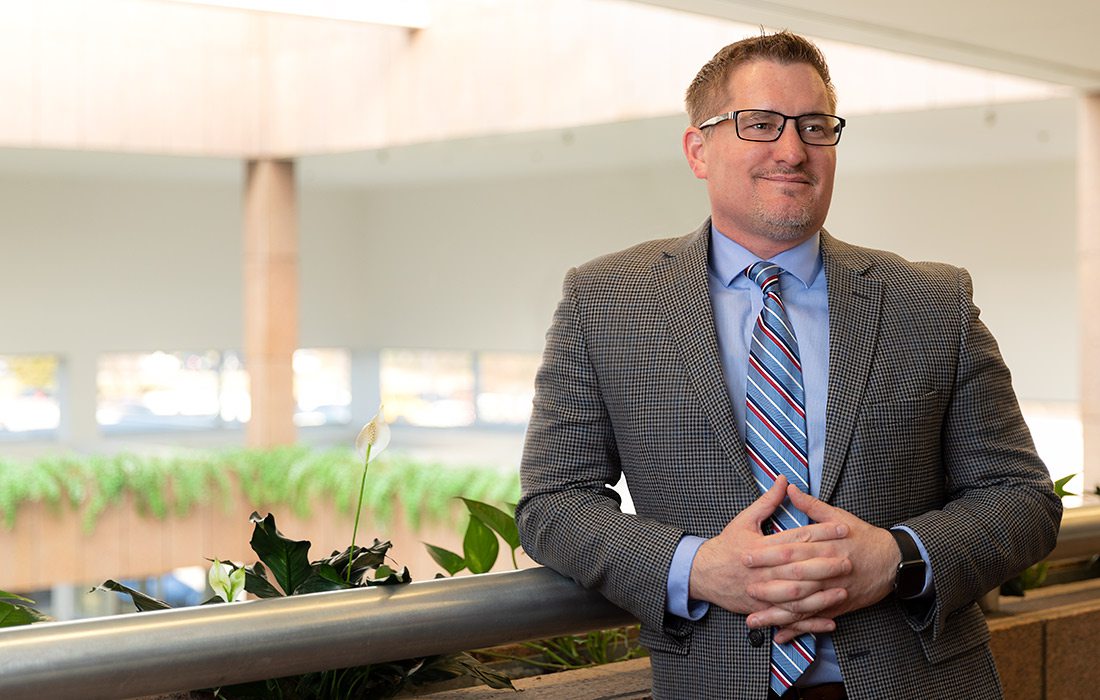
C.J. DAVIS
Originally From: Indianapolis, Indiana | Relocated In: September 2017
C.J. Davis left Missouri to climb the career ladder. Now, he’s giving back in a huge way: by increasing access to mental health care in southwest Missouri and beyond.
For C.J. Davis, moving to Springfield was less of a relocation and more of a homecoming. The president and CEO of Burrell Behavioral Health is a Missouri native, having graduated from Lee’s Summit High School outside of Kansas City. “I’ve always felt connected to Springfield,” Davis says, pointing out that he and his wife spent several years in southwest Missouri pursuing their postgraduate degrees in the mid-nineties. When an executive search firm reached out regarding the CEO position at Burrell, Davis knew it was time to come home.
Now, less than two years after relocating with his wife and teenage twin boys, Davis has already made a lasting impact. Since Davis moved into the corner office, Burrell has seen a 20 percent increase in people served, a 50 percent reduction in wait times and an operating budget that’s leapt from $85 million to $125 million. For Davis, that’s just the beginning. And it’s largely thanks to support from the Springfield community. “I think Springfield’s become a lot more progressive than it was when I was here in the mid-’90s,” he says. “I think the city is hungry for progress. In terms of the mental health perspective, I feel like there is so much support in the business world and the community—everybody wants Burrell to be available and overserve. It’s been phenomenal in terms of community support.”
“I've always felt connected to Springfield.”— C.J. Davis
That support has allowed Davis to envision Burrell’s next phase. “My goal is to create mental health services that are essentially as accessible as Amazon Prime,” Davis says. “When you need care, you receive it.”
He cites a common example: “In the health care world, when you have a broken leg, you know where to go. You go to the [emergency room], and you know you’re going to get in. In the behavioral health field, demand is so high and systems are fairly archaic. People have to wait two, three, four, sometimes five months for service.” Five-month wait times are unacceptable for Davis, who worked with the Burrell team to create a behavioral health walk-in clinic. Other improvements include a website with live chat capabilities, a campaign to remove the stigma from mental health conversations—even an app, which is currently in the development phase. “We believe that we have the opportunity at Burrell to be the Mayo Clinic of mental health,” Davis says.
Ultimately, Davis is proud to contribute to a community that, for his family, has always felt like home—for more reasons than one. “The transition back to Springfield was pretty seamless,” he says. “Of course, we knew where all the Andy’s were located.”

CARMELITA JETER
Originally From: Los Angeles, California | Relocated In: September 2018
Several Olympic medals and one Subaru Sidekick hatchback later, the fastest woman alive has officially joined the Missouri State coaching staff.
Carmelita Jeter has some serious accolades. Aptly nicknamed “The Jet,” Jeter joined her first world championship track and field team in 2007, going on to win three bronze, one silver and three gold medals between 2007 and 2011. In 2012, she also became the first Olympic athlete to ever medal in both the 100- and 200-meter races. Today, she’s claimed the title of Fastest Woman Alive. Technically, she is also the second-fastest woman of all time—second only to Florence Joyner, nicknamed FloJo, who died in 1998.
Jeter’s career is nothing short of remarkable. However, these days, she’s spending more time on the sidelines—last year, she accepted a job as an assistant coach in charge of Missouri State University’s female sprinters and hurdlers. So, how did this L.A.-born powerhouse land on Missouri State University’s coaching staff? “My dad always says that you want to go somewhere you’ll feel appreciated,” Jeter says. That’s exactly what happened when she visited Missouri State during her hunt for a coaching job. “I met so many people, and the energy was just right,” she says.
However, the real deciding factor came just after her campus visit. “Kyle Moats [MSU’s director of athletics] sent me an email that I received when I landed in L.A.,” she says. “It was that email that you send to stick the dagger in. It was very detailed—very, ‘we need you, we want you.’ I put my phone down, shook my head and said, ‘I’m moving to Springfield.’”
“I'm not just here for a year—I'm digging my roots in a little bit.”— Carmelita Jeter
That level of hospitality continued long after Jeter accepted the coaching job. “Everything happened so fast that I was [in Springfield] before my car,” Jeter says. She explains that she was planning on renting a vehicle when Rachel Dockery, MSU’s general counsel and chief compliance officer, volunteered to let her borrow her car. “She pulls up in a Subaru Sidekick hatchback with all these stickers on the back,” Jeter says. “I’m like, this is your actual car? I tried to say no, but she wasn’t having it.” Dockery demanded that Jeter keep the Sidekick until her car arrived from L.A. “I didn’t even know this woman’s name,” Jeter says. “That’s how I knew I was in the right place. It really made me feel special.”
So special, in fact, that Jeter is ready to put down roots—she recently started Missouri State’s graduate program in pursuit of a master’s degree in sports management. “Starting the grad program speaks volumes to my commitment here,” she says. “I’m not just here for a year—I’m digging my roots in a little bit.” So far, she’s enjoying the slower pace in Springfield. “It’s been a little different, but I’ve met some amazing people with huge hearts,” she says. However, there is one thing she’d like to change: “I haven’t found a date yet,” she says, laughing. “Once I find a date, we’ll be in business.”

CATHERINE BASS BLACK
Originally From: Atlanta, Georgia | Relocated In: May 2015
Catherine Bass Black moved to Springfield to serve as Bass Pro’s director of community affairs and talent acquisition. Although she’s since accepted a role at global executive search firm Odgers Berndtson, her roots are still planted firmly in southwest Missouri.
417 Magazine: Walk us through the process of your relocation.
Catherine Bass Black: [My husband,] James, was being recruited by Mercy Hospital out of a fellowship training, and we were living apart at the time—I was in Atlanta, and he was in St. Louis. James was very clear with the hospital that we came as a package deal, and they were going to have to really sell both of us when it came to employment opportunities. At that time, I was very much in a career that I loved. The head of Mercy sent my resume to the head of human resources at Bass Pro Shops, and both organizations began recruiting us. We came to visit in late 2014, and everyone we met was kind—genuinely friendly and very welcoming. From there, I moved in May of 2015 to start at Bass Pro Shops, and James followed in August of 2015.
417: As head of national talent acquisition and corporate philanthropy for Bass Pro Shops, you had to attract talent to southwest Missouri. What’s Springfield’s selling point?
C.B.B.: A big part of it was highlighting Springfield’s assets depending on what was important to the individual. If [candidates] are looking for great schools and opportunities to raise their families, that’s one story. Cost of living is another compelling story, as well as the opportunity to get outside and enjoy the beautiful area. No matter what candidates are looking for, Springfield is very welcoming to people not from the area. Even now, as I’m working remotely for a global firm, I hope I’m able to continue to recruit and bring top talent and families to Springfield.
417: Was there a moment when you started to feel like a local and not just a visitor?
C.B.B.: For me, joining a company that was a big hometown brand like Bass Pro Shops—and for James, joining one of the area’s leading health care employers—really made us feel connected to Springfield. Both organizations did a great job of making us feel welcome. Actually, when we made the decision to come to Springfield, my husband gifted me a subscription to 417 Magazine, which is really how I started learning about the community.
417: What’s something that surprised you about moving here?
C.B.B.: Springfield is a very civic-minded community, and it’s extremely easy to get involved if there’s a cause you’re passionate about. This is very telling of Springfield’s willingness to welcome those that want to be part of the community. I haven’t even lived here for four years, and I’ve been able to serve on the boards for Ozark Greenways and the Junior League of Springfield. I’m also on the Springfield Area Chamber of Commerce executive committee and am a past member of Red Cross of Southwest Missouri. [James and I] believe in supporting our community, and if you are like-minded in that, there is huge opportunity for it in Springfield.
What do you miss about living in southwest Missouri?
We asked three transplants what they miss most about living in the Ozarks.
Downtime
“I’m often struck by what I miss from my hometown. Like the tap that tastes slightly sweet and the front porch swings that creak in wind and are the perfect place to spend a lazy summer afternoon. And probably most of all, the appreciation of downtime in a day. Those moments where you can catch your breath and take in the wonderful hums of the city around you. Oh, and definitely sweet and sour cashew chicken from Canton Inn. It’s one-of-a-kind.”
—Stella Blackmon, transplanted to New York City
Good Vibes
“I miss my family, of course. But I also miss cheap craft beer, knowing how to get anywhere I want to go and the general vibe of the Ozarks.”
—Tyler Snodgrass, transplanted to Chicago
The Familiar
“The Moxie! The Nature Center. Familiarity in general is nice.”
—Avalon Johnson, transplanted to Jaén, Spain
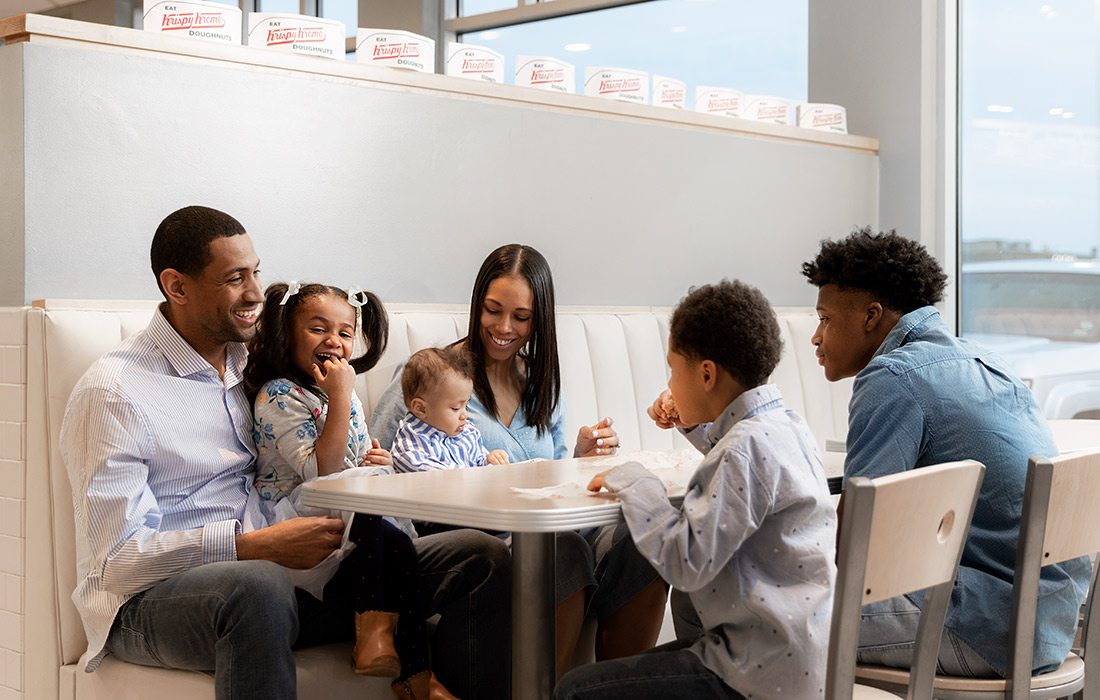
DANA FORD
Originally From: Nashville, Tennessee | Relocated In: March 2018
We grilled Missouri State’s basketball coach, a Nashville transplant, about his move to Springfield, MO.
417 Magazine: What was your first impression?
Dana Ford: Everyone was so welcoming—a lot of people wanted to get to know the new coach. Everyone has been awesome. It’s such a great place to raise your family. It’s also a place where faith is important, which is important to me and my family.
417: Do you have a favorite local eatery?
D.F.: City Butcher is unbelievable, and the kids love Andy’s.
417: When did you first feel at home here?
D.F.: Last summer was the first time we went out of town as a family and came back home to Springfield. Spending the holidays here, having people over—those are the things that start to make it feel like home.
417: What is the best way to spend a weekend?
D.F.: We’re homebodies, so we love to hang out and watch movies. We love having visitors. Sometimes, my boys will want to go up to the Q to shoot hoops.
417: What is Springfield’s most unique quality?
D.F.: Everyone here wants what’s best for Springfield as a community, especially the people at the university. People are so helpful and welcoming—they’re really interested in trying to turn that corner into a new way of life. For example, look at the growth and innovation downtown. Missouri State’s president [Clif Smart] is part of a group that visits other cities and brings back innovative ideas. The fact that people in this community are willing to partner together and work to make Springfield a better place to live for everybody—that’s something special.
417: What’s your next move?
D.F.: Launching our nonprofit. It’s called the Rebound Foundation, and we partner with local homeowners to find shelter for women leaving domestic violence shelters. We started it in Nashville, but it’s been easy to get it going in Springfield since there are so many nonprofits here.
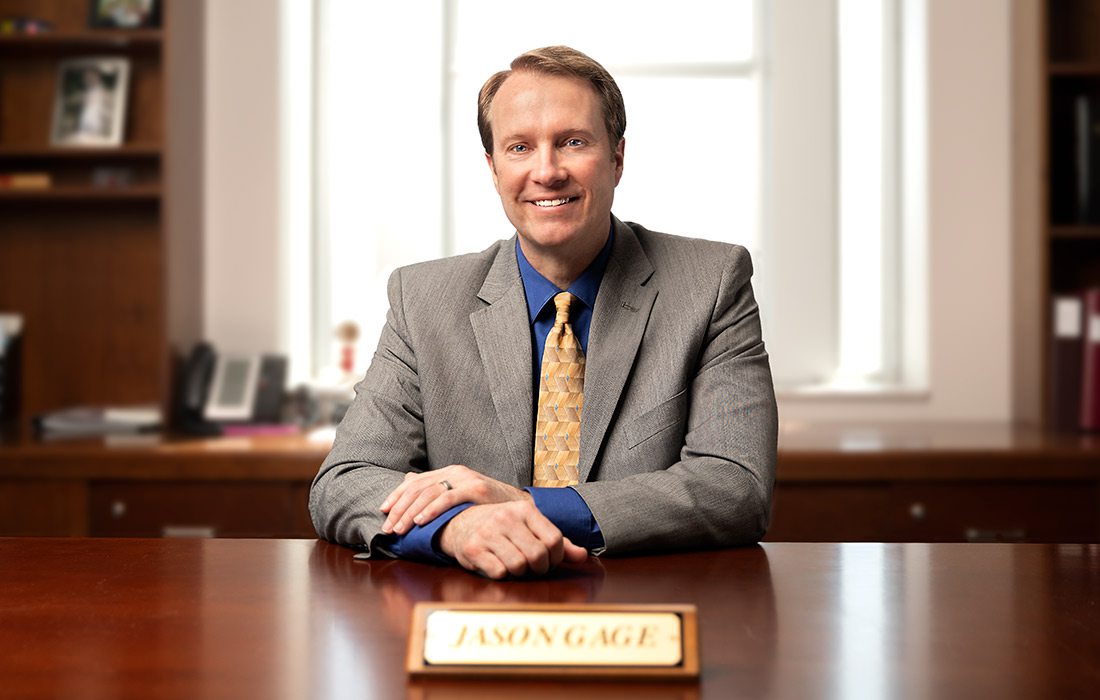
JASON GAGE
Originally From: Salina, Kansas | Relocated In: August 2018
In August 2018, Missouri native Jason Gage moved to Springfield from Salina, Kansas, to begin his tenure as city manager. Now, Gage shares how he’s hoping to put more than 20 years of city management experience to use in his new home.
Take advantage of Springfield’s momentum.
“I was born in Lamar and raised in nearby Nevada, and I had been hoping to find an opportunity to come back to Missouri. I had been looking for opportunities in both Springfield and Columbia, and I noticed Springfield’s ability to address larger city issues and move forward without much squabbling. The community didn’t seem to be haggling over the same issues over and over, which is something that keeps a lot of communities from moving forward.”
Get involved in the community.
“When I moved to Springfield, people were very warm, very inviting, early on. Many of the people who were involved in community issues showed me that Springfield as a community expects collaboration, engagement and partnerships. It was nice seeing a lot of the same people working on committees and community issues—really putting time and energy into moving the community forward. I’d like to work my way into those groups more and more as time goes on.”
Strengthen the private sector.
“If there’s a way that my role with the city can be that of a partner and asset—working with the private sector to bring in and grow more jobs locally while strengthening our wages and benefits—that would be ideal. When you look at our demographic, wages are lower than they need to be. Even with our low cost of living, there’s some room for wages to increase.”
Explore the parks system.
“Springfield has a wonderful city and county park system. I’ve spent some time exploring Nathanael Greene Park, which has phenomenal trails and gardens. For me, exploring parks and trails is a great way for any newcomer to become more familiar with the community.”
Mitigate the effects of poverty.
“The world has been trying to fight poverty from the beginning. It’s really hard, and it’s going to take a long time to make movement in some of those areas. While we need to do our best to mitigate poverty’s impacts, we also need to try to focus on growing wealth in our community while providing the necessary training for people to learn skills that complement jobs. I’m extremely impressed with the post-secondary educational presence in our community—the way colleges and universities are focused on workforce development and training. Now, we just need to scale that up.”
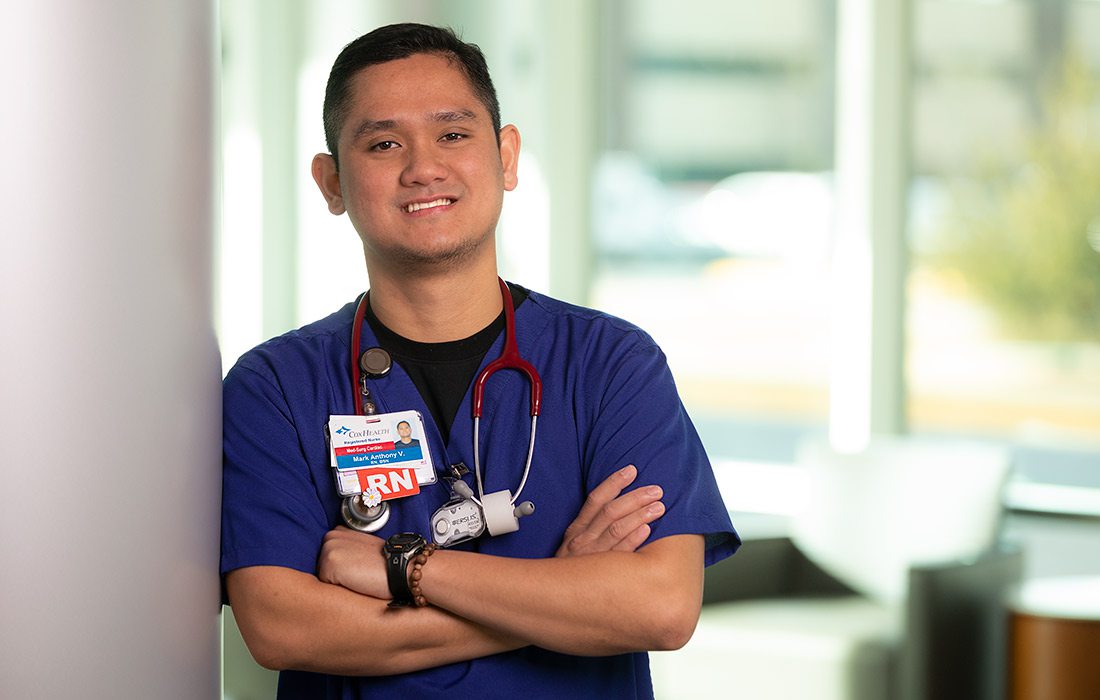
MARK VILLAJUAN
Originally From: American Samoa | Relocated In: May 2018
When Philippines-born nurse Mark Villajuan migrated to Springfield, he expected cold winters and culture shock.
Instead, he found a warm community.
Mark Villajuan wasn’t supposed to end up in Springfield. “When I applied for my job as a nurse, I was supposed to go to the West Coast,” he says. “The agency ended up placing me in Springfield. I was like, ‘Oh my god, I’m going to the Midwest. Oh my god, I really hate the cold.’” Fortunately, the weather had warmed up when Villajuan arrived in May of 2018—and the people weren’t half bad, either. “I immediately felt like I was back home,” Villajuan says. “The people are very accommodating. I decided that maybe I can stand the snow and the winter.”
Although Villajuan notes some cultural differences—he’s used to the relaxed culture of American Samoa, where he had been living before moving to Springfield—he and his family are settling in well. Since Samoa is a U.S. territory, he was well-acquainted with federal hospital standards, although there were some state differences when he started at Cox. Luckily, the CoxHealth team helped him get adjusted quickly. He was also able to meet his fellow international employees at a gathering hosted by the CoxHealth nursing administration, which he says helped him feel welcome. Now, he enjoys sharing his culture with the patients on the cardiac floor where he works—like the time he was communicating with a Samoan patient and taught another nurse some key phrases to improve the quality of the patient’s care. “That’s why I became a nurse,” he says. “My purpose is to serve the community members. No matter what skin color you have or what ethnicity you belong to, nursing is nursing.”
When Villajuan isn’t saving lives on the cardiac floor, he spends his free time with his wife and his two kids. His worries about Midwestern winters turned out to be unwarranted—for Villajuan, seeing his little ones experience their first snow was an unforgettable experience. “Kids are so amazing,” he says. “It’s nice to see a new place through their eyes.”
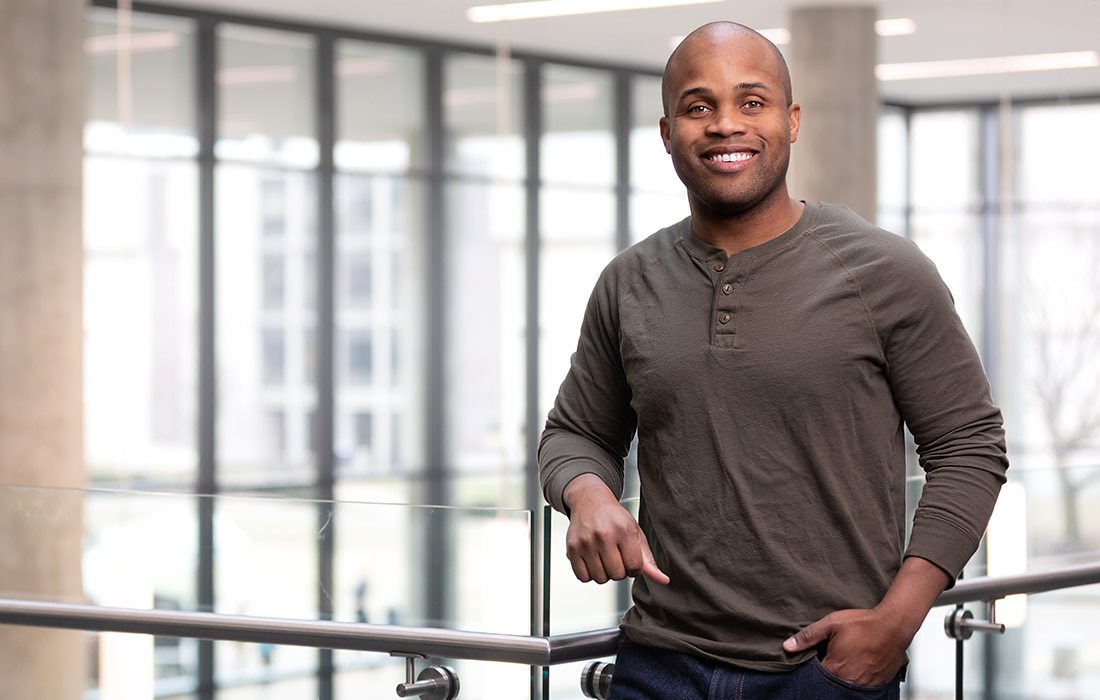
MAURICE MOSS
Originally From: Tulsa, Oklahoma | Relocated In: June 2017
When City Utilities Utility Counsel Maurice Moss moved to Springfield, he immediately noticed the city’s lack of cultural and ethnic diversity. Now, he’s doing everything he can to make Springfield more hospitable for diverse transplants.
Maurice Moss grew up near Poplar Bluff, frequently traveling to Springfield to visit family. However, when Moss and his wife, Christa, relocated to Springfield from Tulsa in 2017, he was pleasantly surprised to discover a whole new side to the city he thought he had known so well. “Now, to see the restaurants and coffee shops and bars and the constant movement and growth—I think that’s awesome,” he says. “It’s made the transition a lot easier.”
Moss was immediately impressed by Springfield’s cultural and dining scene—he’s a regular at Civil Kitchen, Tinga Tacos and Druff’s—but he was also struck by Springfield’s lack of diversity. “Springfield is a really good mid-sized metro city,” he says. “Unfortunately, it’s obvious that Springfield is lacking in diversity in a lot of ways.”
According to the City of Springfield’s latest visioning guide, Field Guide 2030, the population of Springfield’s metro area is more than 90 percent white. “My wife and I joke about how it was tough for her to find African-American hair products when we moved here,” he says. “But, in reality, she has to go back to Tulsa to find the kind of hair products and salons she needs. When you’re pushing for a diverse culture, there’s going to be things that diverse people need that you might not think about.”
Now, Moss is committed to positioning Springfield as a desirable home for underrepresented individuals and families. He serves on Missouri State University President Clif Smart’s diversity council and the board of directors for Boys and Girls Clubs of Springfield, two organizations that allow him to broaden Springfield’s horizons. For Moss, it’s all part of making Springfield a better place for all residents—including his 2-year-old son, James. “I want to raise my son here,” he says. “I want him to look around in his classroom and not be the only African-American kid. I want him to believe that there’s an ability to go anywhere and do anything within his community.”
How to be a Hospitable Neighbor
Greet newcomers with a little midwest hospitality that our area is so well known for.

A quick neighborly greeting is the easiest way to make new arrivals feel welcome. Wait for a lull in their move-in frenzy, then pop over to introduce yourself and ask about any kids or pets. While a cheery greeting is usually welcome, make sure to be respectful of new neighbors’ time and space—keep it quick so they can focus most of their energy on unpacking.

417-land neighborhoods are some of the tightest-knit communities around. Consider working with your neighbors to compile a welcome packet with handy tips like trash days and names of local babysitters and handymen. If you’re feeling fancy, include a six-pack of locally brewed beer or some coffee beans from The Coffee Ethic, Big Momma’s or Mudhouse.

Channel your inner June Cleaver and surprise your new neighbors with a tasty treat. Fuss-free goodies like banana bread (try this tasty recipe with a local twist—it includes Askinosie Cocao Nibs!) are an easy way to make new neighbors feel welcome—just be mindful of food allergies. Make sure to list your dessert’s ingredients on a card so the new neighbors can be cognizant of any tricky ingredients. If you’d rather err on the side of caution, surprise new neighbors with a non-edible gift like a houseplant.
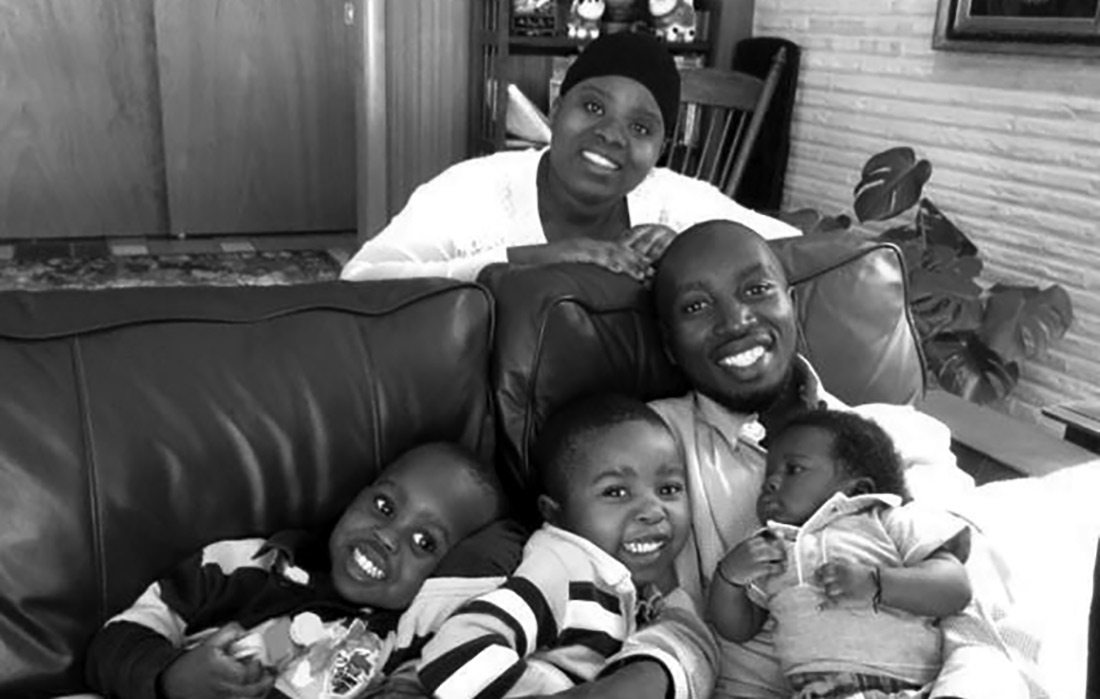
PASCAL NZABO
Originally From: Kampala, Uganda | Relocated In: January 2017
Pascal Nzabo is spreading the word about how Springfield can be more welcoming to refugees like himself.
Pascal Nzabo remembers his first experience on U.S. soil. After a grueling flight from Kampala, Uganda, Nzabo and his family were met by a caseworker in Philadelphia. “She picked us up from the airport and took us to our apartment, but there was no food,” he says. “So she gave me some money so I could feed my family and told me to meet her the next day so we could process my food stamps.” Unfortunately, Nzabo, a refugee unsettled by violence in his native Congo, was unfamiliar with food stamps. “I didn’t even know about grocery stores,” Nzabo says. “In Africa, most markets are open-air. When I walked to the store to find food, I didn’t know that had to go inside and open the door.” Two years later, Nzabo is well-adjusted, driving for Prime and living with his family on Springfield’s north side. However, his story is a striking illustration of the culture shock faced by many refugees upon arrival in the United States.
Nzabo spent most of his life in a refugee camp in Uganda, eventually moving to the capital city of Kampala. "In 2017, a group of government and nonprofit organizations gave him the opportunity to bring his wife and two children to the United States." Nzabo learned English in Uganda, which allowed him to find employment fairly quickly. However, some of his friends and family members weren’t so fortunate. “My hope is that [employers] would give refugees a chance,” Nzabo says. “Even if they can’t speak English, they have the talent. They can do anything.”
When Nzabo and his family arrived in Springfield, they were met by Springfield Welcome Home, a local nonprofit that settles refugees. For Nzabo, the organization immediately made Springfield feel like a home instead of a temporary destination. “I haven’t seen that hospitality in any other places,” he says. “Someone who doesn’t know you comes and gives you food at home. I think they even paid my rent. I don’t think there’s any other place in the country [with people] like that.”
Today, Springfield Welcome Home works with about 200 Congolese refugees in the Springfield area. Now that Nzabo is settled, he’s sharing his story in hopes that 417-landers will be more hospitable toward refugees—and he encourages employers to be open to working with them. “I want people to know that ‘refugee’ is not a bad word,” Nzabo says. “You could be a refugee tomorrow… Just put yourself into the shoes of someone else.”
He’s confident that he and his family can make a life in Springfield—although his 7-year-old son, Jazna, may have other ideas. “Jazna told me he wants to go back to Africa when he’s 19 to help the orphans in the refugee camps,” Nzabo says, laughing and shaking his head. “He told me, ‘Dad, I have to start saving money so I can go back to help people.” With any luck, Jazna will keep that big heart right here in southwest Missouri.

ROBIN SOSTER
Originally From: Fayetteville, Arkansas | Relocated In: July 2018
Drury’s new MBA director came to Springfield for its “freakishly collaborative” spirit and stayed for the bustling cultural scene.
Soster has been immersed in Springfield’s cuteness since July of last year, when she left the University of Arkansas to join the faculty at Drury University’s Breech School of Business. Originally hired as a visiting professor and MBA director, Soster has since been promoted to Breech’s associate dean, a role that allows her to shape the business school while teaching several classes, and making her move a little more permanent. “When you want to make changes at a large university, it’s like steering a barge,” she says. “But with a small private school like Drury, it’s pretty nimble. If you want to change something, you can feasibly accomplish that in the following semester.”
“Lots of people know lots of people in this town, which is really unique”— Robin Soster
According to Soster, moving to Springfield from Fayetteville was a natural transition. “The faculty at Drury are just fantastic,” she says. “But what really sealed the deal was the area. Springfield’s downtown is great—we lived in a historic district in Fayetteville, so we love walking to local restaurants and having accessibility to all of that.” Soster was able to snag a studio apartment in the downtown Cresco building, where she’ll stay until her husband and 13-year-old son join her from Fayetteville. Although Soster appreciates downtown’s proximity to Springfield’s historic Center City neighborhoods, she’s especially involved in the area’s vibrant cultural scene. Her downtime is often spent taking in live music at downtown venues—last year, she caught Gordon Lightfoot and Toto when they played at the Gillioz.
For Soster, Drury is a microcosm of the overall Springfield community at large, which she calls “freakishly collaborative.” “That’s a positive thing,” she says. “Lots of people know lots of people in this town, which is really unique. At the same time, it’s not insular—you’ll meet someone who immediately wants to introduce you to someone else. I have felt very embraced from the beginning.”

SUE & GARY VANANTWERP
Originally From: Homewood, Illinois | Relocated In: March 2017
In 2017, Sue and Gary VanAntwerp packed up their home in Chicago’s south suburbs and moved to Springfield to be near their grandchildren. Two years later, the VanAntwerps are proud east side residents with a keen eye for Springfield’s quirks.
Springfield is: Convenient.
Moving was daunting for Gary, who had lived in Homewood, a southern suburb of Chicago, for his entire life. “I had never lived anywhere else, but it’s been awfully nice living so close to everything we need,” he says. “I get my hair cut down the street. Then, our veterinarian is just across the street. We do Silver Sneakers at Dan Kinney, which is just a short drive away. Everything is so easily accessible.”
Springfield is: A Bit Slower-Paced.
“People drive differently here,” Sue says, laughing. “In Chicago, drivers will pull right into intersections when they’re yielding. If you don’t pull into the intersection while you’re waiting, you won’t make the light. There, three cars will go on one yellow light. Here, you’re liable to miss the light completely because the person in front of you won’t just get out into the intersection.”
“Everything is so easily accessible.”— Gary VanAntwerp
Springfield is: Seriously Tasty.
“We’ve been very impressed with the dining options here,” Sue says. “We love going to Nicola’s, which is just down the street, and we just discovered Prima’s, which is some really excellent Mexican food.”
Springfield is: Home to Occasionally Misguided Wardrobe Choices.
“We weren’t expecting the sheer number of people wearing shorts in the winter,” Sue says. “It’s almost like a game that we play—when we see someone wearing shorts when it’s freezing outside, we’ll both yell, ‘Shorts! Look, there’s one over there.’ I don’t understand it.”

